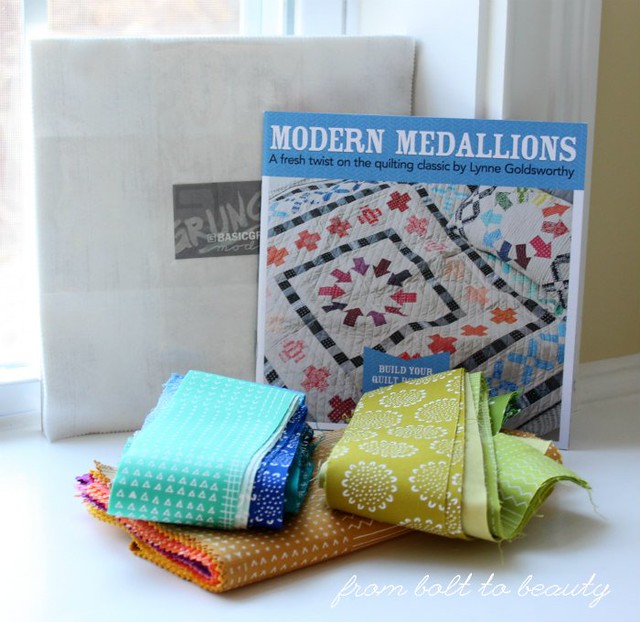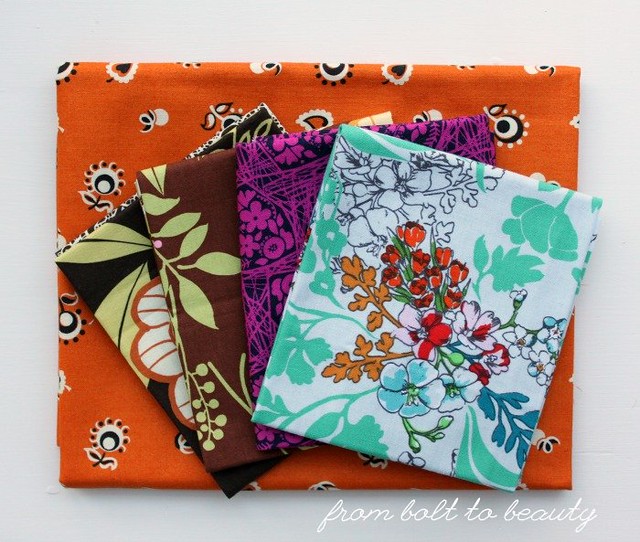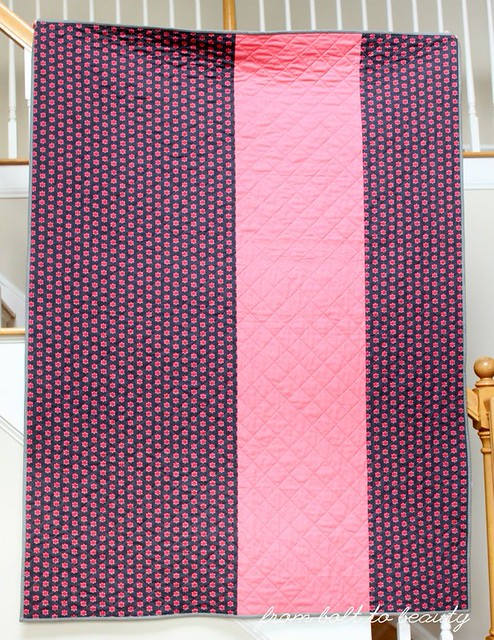I designed the project in question back in October 2015 and started to piece it in Essex linen and “made fabric.” I was using fabric that I love, and I thought that meant I would love the final product. But this design is a commitment. It features huge geese (or geese-ish triangles, not all of them reflect the standard 1:2 proportion for geese). In fact, the largest of these geese are 40 inches wide. When I realized I wasn’t getting results I liked early in the process, I cut my losses, unpicked stitches, and set aside the bits of fabric for other projects.
 |
| My original design, from 2015. |
 |
| My first try included blue prints and Essex linen. |
A year later, this design was still stuck in my head. I started piecing it a second time, in three Kona colors: white, shadow, and pewter. In attempt to add some color to the lackluster palette, I incorporated some solids and prints in shades of raspberry and cranberry. Again, I didn’t like how the project was coming together, so I folded it up nicely and hid it in the back of my closet.
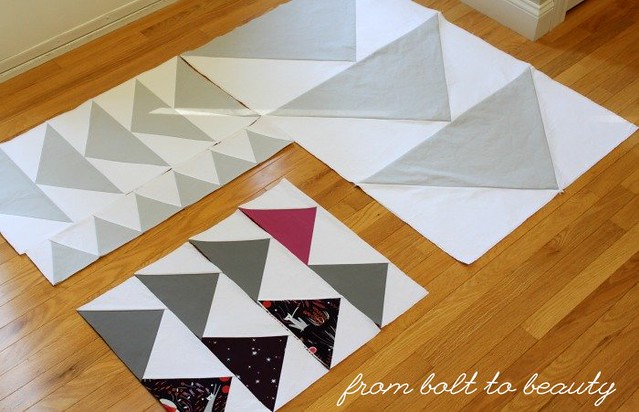 |
| A second try, with colorful solids and prints. |
When establishing my quilt-related goals for 2018, though, I knew I had to finish this quilt. I decided to omit the more colorful fabrics and finish the design in the muted Kona solids. Once I was ready to quilt, I could add color with thread. Cassandra Beaver has used thread in that way; maybe I could achieve similar success with my quilt. (See this post from Cassandra for some examples of how she uses thread to add color and enhance design.)
In the end, however, this quilt wanted to be about size and shape, not color. I used an off-white thread to quilt each section densely in a different direction. So, for example, the top-left arrows that point to the left are quilted with horizontal lines, and the equilateral triangles below them are quilted with vertical lines.
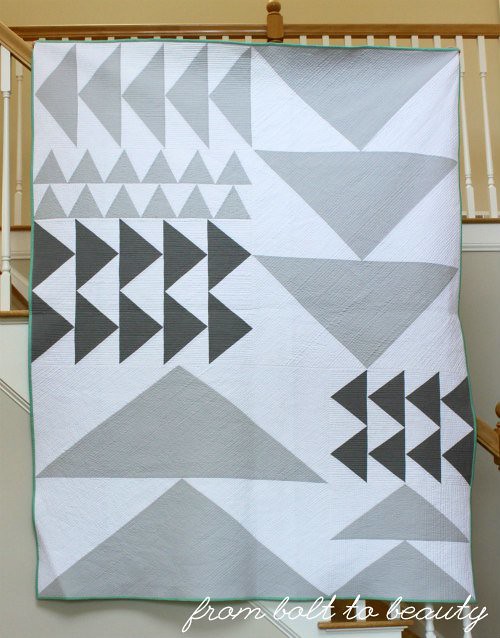 |
| Finally, a finish! |
The only deviance from the gray and white palette is the Kona Aloe I used for the binding, which matches the back.
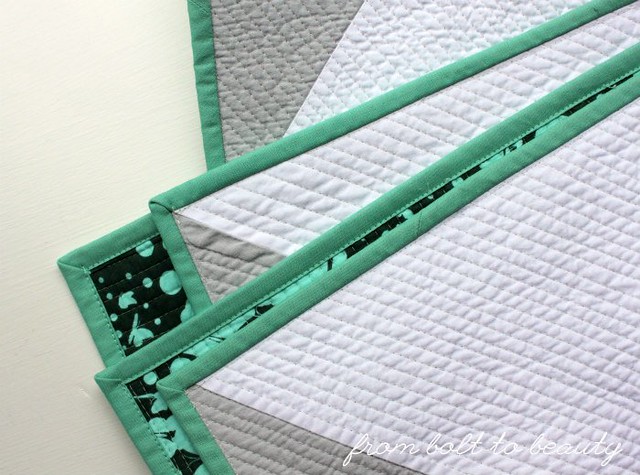 |
| The binding adds the hint of color the quilt needed. |
Not every project deserves to come to fruition; there is something to be said for knowing when to give up. I’m glad that I followed this rabbit hole through to the end, though, and I’m ecstatic about the final product.
Do you have a project that won’t die in your quilt queue? Let us hear all about it in the comments. : )
Linking up to Let’s Bee Social, Needle and Thread Thursday, and Finish It Up Friday ...

